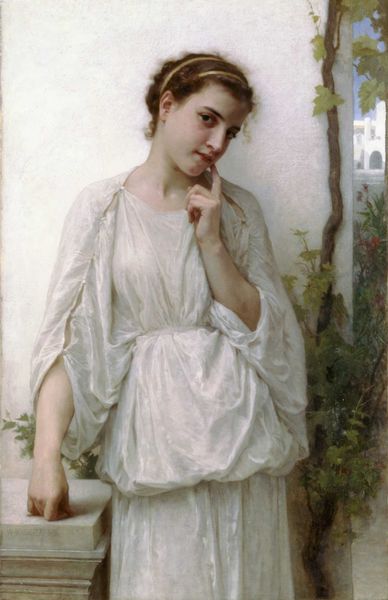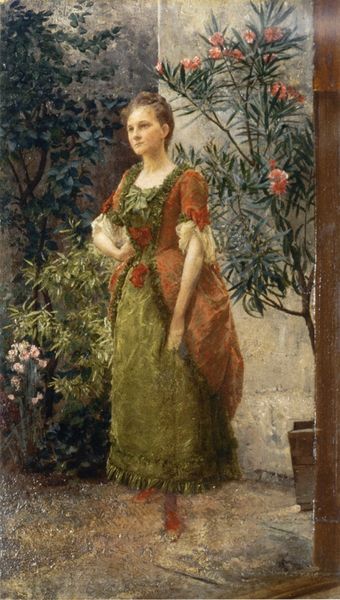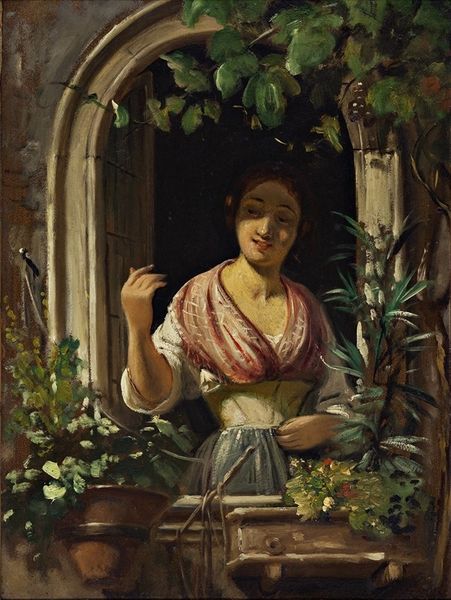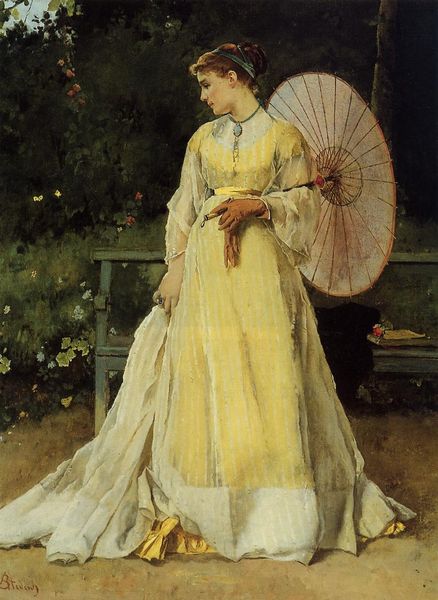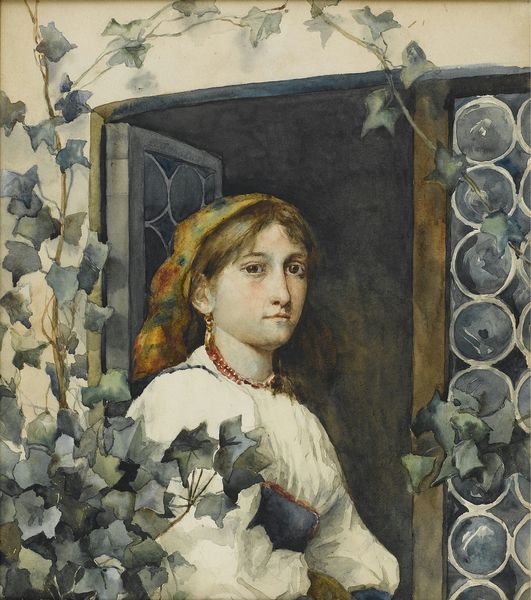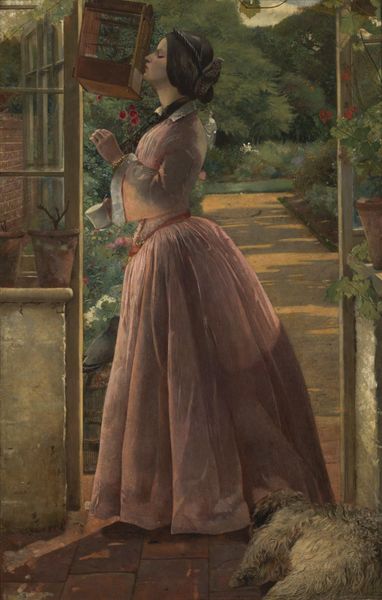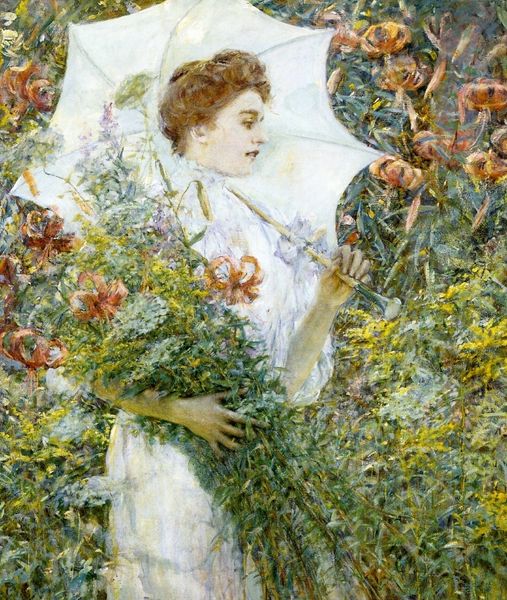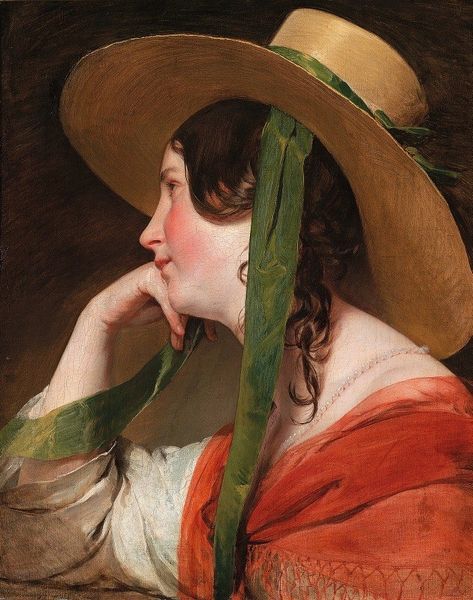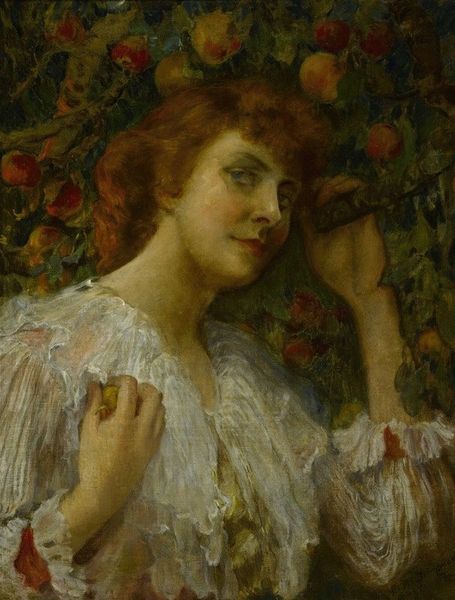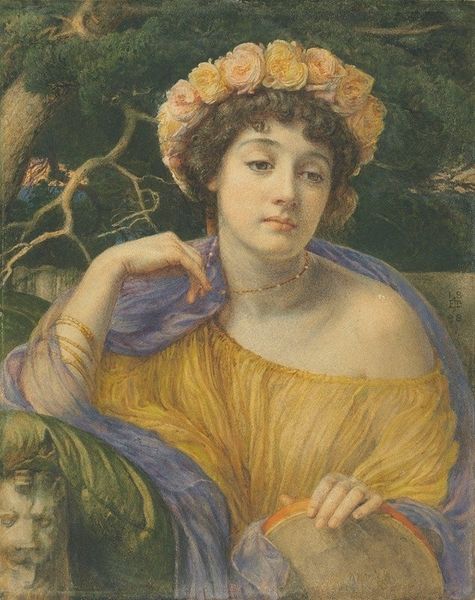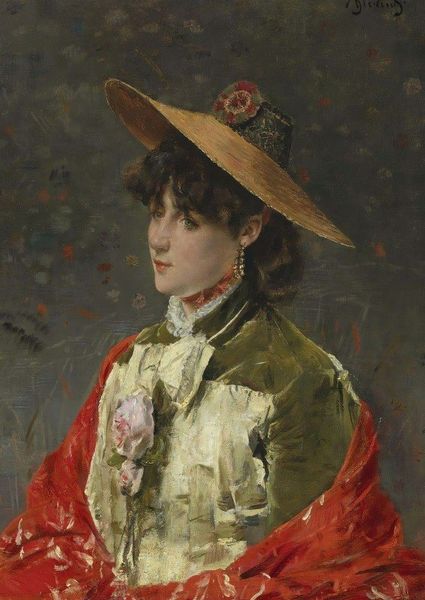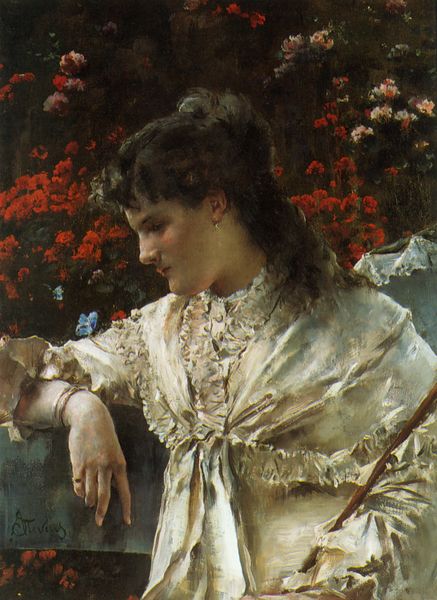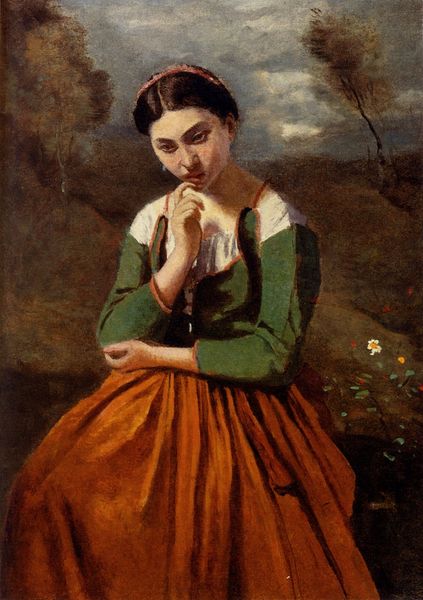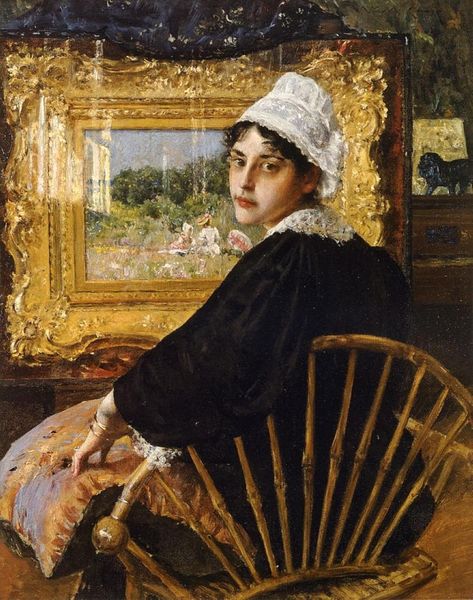
plein-air, oil-paint
#
portrait
#
impressionism
#
plein-air
#
oil-paint
#
landscape
#
romanticism
Dimensions: 92 x 69 cm
Copyright: Public domain
Curator: Looking at this artwork, what first strikes you? Editor: There’s a delicate, almost melancholy air about it. The woman's gaze is averted, and the light seems subdued, giving the impression of a private, reflective moment. Curator: This is Portrait of a Young Woman by Léon Bazile Perrault. Although we don’t have an exact date for it, the style aligns with late 19th century Impressionistic plein-air painting. What resonates is its display of shifting cultural values about women. Editor: I see the symbols so typical for this period: She is young and wearing white, a dress almost too pure; but what do you think of the open letter she holds, a common visual device? Curator: Ah, yes, a classic element of romantic and societal portraiture, representing sentimentality, or perhaps secrets and inner reflection? The setting, the leafy backdrop, enhances a sense of privacy and escape from the structured society of the time. I find Perrault's decision to render it with elements of both landscape and portraiture, quite daring. Editor: It creates a beautiful paradox: the vulnerability of the individual set against the grand scheme of nature. Consider how the parasol becomes this protective symbolic device. We often perceive an umbrella as a purely practical item. But the use of lace here really conveys something different. Curator: Lace represents status, yes? It becomes a visual shorthand for her belonging to a certain class and her dependence on its protection and norms. The parasol simultaneously signals wealth and also shelters her from the male gaze. It is an intriguing symbol of this cultural power at the time. Editor: Absolutely. Perrault does a wonderful job. It is more than just a portrayal of one woman. The artist hints at larger stories through nuanced choices in symbolism and composition, that are typical in fin-de-siècle artwork, using elements to trigger contemplation of both private life and shared anxieties about women. Curator: It reminds us that even seemingly straightforward portraiture can be a rich document of societal trends.
Comments
No comments
Be the first to comment and join the conversation on the ultimate creative platform.
